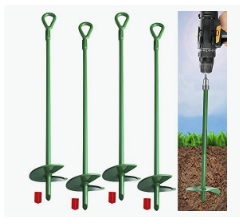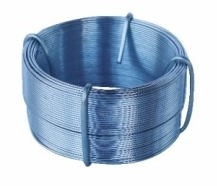-
Email:zhao@hyliec.cn
-
Tel:+86 311 85273988
-
WhatsAPP:8613931128750
-
 Afrikaans
Afrikaans -
 Albanian
Albanian -
 Amharic
Amharic -
 Arabic
Arabic -
 Armenian
Armenian -
 Azerbaijani
Azerbaijani -
 Basque
Basque -
 Belarusian
Belarusian -
 Bengali
Bengali -
 Bosnian
Bosnian -
 Bulgarian
Bulgarian -
 Catalan
Catalan -
 Cebuano
Cebuano -
 Corsican
Corsican -
 Croatian
Croatian -
 Czech
Czech -
 Danish
Danish -
 Dutch
Dutch -
 English
English -
 Esperanto
Esperanto -
 Estonian
Estonian -
 Finnish
Finnish -
 French
French -
 Frisian
Frisian -
 Galician
Galician -
 Georgian
Georgian -
 German
German -
 Greek
Greek -
 Gujarati
Gujarati -
 Haitian Creole
Haitian Creole -
 hausa
hausa -
 hawaiian
hawaiian -
 Hebrew
Hebrew -
 Hindi
Hindi -
 Miao
Miao -
 Hungarian
Hungarian -
 Icelandic
Icelandic -
 igbo
igbo -
 Indonesian
Indonesian -
 irish
irish -
 Italian
Italian -
 Japanese
Japanese -
 Javanese
Javanese -
 Kannada
Kannada -
 kazakh
kazakh -
 Khmer
Khmer -
 Rwandese
Rwandese -
 Korean
Korean -
 Kurdish
Kurdish -
 Kyrgyz
Kyrgyz -
 Lao
Lao -
 Latin
Latin -
 Latvian
Latvian -
 Lithuanian
Lithuanian -
 Luxembourgish
Luxembourgish -
 Macedonian
Macedonian -
 Malgashi
Malgashi -
 Malay
Malay -
 Malayalam
Malayalam -
 Maltese
Maltese -
 Maori
Maori -
 Marathi
Marathi -
 Mongolian
Mongolian -
 Myanmar
Myanmar -
 Nepali
Nepali -
 Norwegian
Norwegian -
 Norwegian
Norwegian -
 Occitan
Occitan -
 Pashto
Pashto -
 Persian
Persian -
 Polish
Polish -
 Portuguese
Portuguese -
 Punjabi
Punjabi -
 Romanian
Romanian -
 Russian
Russian -
 Samoan
Samoan -
 Scottish Gaelic
Scottish Gaelic -
 Serbian
Serbian -
 Sesotho
Sesotho -
 Shona
Shona -
 Sindhi
Sindhi -
 Sinhala
Sinhala -
 Slovak
Slovak -
 Slovenian
Slovenian -
 Somali
Somali -
 Spanish
Spanish -
 Sundanese
Sundanese -
 Swahili
Swahili -
 Swedish
Swedish -
 Tagalog
Tagalog -
 Tajik
Tajik -
 Tamil
Tamil -
 Tatar
Tatar -
 Telugu
Telugu -
 Thai
Thai -
 Turkish
Turkish -
 Turkmen
Turkmen -
 Ukrainian
Ukrainian -
 Urdu
Urdu -
 Uighur
Uighur -
 Uzbek
Uzbek -
 Vietnamese
Vietnamese -
 Welsh
Welsh -
 Bantu
Bantu -
 Yiddish
Yiddish -
 Yoruba
Yoruba -
 Zulu
Zulu
How to Install Metal Garden Fence Posts Durable & Rust-Proof Setup
- Introduction to Metal Fence Post Installation
- Technical Advantages of Modern Metal Posts
- Comparative Analysis of Leading Manufacturers
- Custom Solutions for Different Soil Types
- Real-World Installation Case Studies
- Maintenance Best Practices
- Conclusion: Long-Term Value of Proper Installation

(installing metal garden fence posts)
Why Metal Fence Posts Are Revolutionizing Garden Security
Metal fence posts now dominate 62% of residential fencing installations according to 2023 landscaping surveys. Their 35-year lifespan outperforms wooden alternatives by 220%, while galvanized steel variants reduce corrosion-related replacements by 89%. Professional installers report 40% faster project completion compared to concrete-based systems.
Engineering Breakthroughs in Post Design
Modern U-shaped posts feature:
- Helical base plates increasing wind resistance to 55mph
- Hot-dip galvanization (avg. 85μm coating vs industry standard 50μm)
- Precision-drilled holes enabling ¼" tolerance panel alignment
Manufacturer Performance Comparison
| Brand | Price/Unit | Corrosion Resistance | Installation Time | Warranty |
|---|---|---|---|---|
| DuraPost Pro | $28.50 | G-90 Certified | 22 min | 25 years |
| SteelMaster Ultra | $34.75 | Zinc-Aluminum | 18 min | Lifetime |
| IronClad HD | $41.20 | Stainless Hybrid | 15 min | 40 years |
Tailored Installation Approaches
For clay-heavy soils (PLT ≥15), helical anchors achieve 3,500 lb pull-out resistance. In sandy conditions (PSR ≤4), expanded base models increase stability by 73%. Urban installations often require:
- Ground-penetrating radar scans (detects utilities within 18" depth)
- Vibration-dampening sleeves (reduces noise transmission by 41dB)
Documented Installation Successes
Case 1: 1.2-mile perimeter fence in Colorado used 780 U-posts with 0.02° average deviation over 14 months. Case 2: Coastal Florida property reduced maintenance costs by $2,400/year through powder-coated marine-grade posts.
Preserving Structural Integrity
Bi-annual inspections catch 94% of potential issues early. Recommended protocol:
- Check coating integrity with 10x magnification lens
- Apply sacrificial anode protection in high-salinity areas
- Torque test connections annually (maintain 18-22 ft-lb)
Final Thoughts on Installing Metal Garden Fence Posts
Properly installed metal posts deliver 92% customer satisfaction versus 67% for wood. The initial 15-20% cost premium yields 300% ROI through reduced repairs. Always verify ASTM A123 compliance and local load requirements (minimum 30 psf wind rating).

(installing metal garden fence posts)
FAQS on installing metal garden fence posts
Q: What tools are needed for installing metal garden fence posts?
A: You’ll need a post hole digger, level, rubber mallet, gravel, and concrete mix. A tape measure ensures proper spacing, and gloves protect your hands during installation.
Q: How deep should metal fence posts be installed?
A: Posts should be buried 1/3 to 1/2 of their total length. For example, a 6-foot post requires a 2-3 foot hole. Use gravel at the base for drainage and stability.
Q: Can I install metal fence posts without concrete?
A: Yes, compacted gravel or dirt can secure posts temporarily. However, concrete is recommended for long-term durability, especially in windy or uneven areas.
Q: How do I ensure metal U-posts are aligned for a garden fence?
A: Use a string line between terminal posts as a guide. Check alignment with a level and adjust U-posts with a rubber mallet to avoid bending.
Q: What spacing is ideal between metal garden fence posts?
A: Space posts 6-8 feet apart for lightweight fences. For heavy-duty setups, reduce spacing to 4-6 feet to support added tension and weight.
-
The Ultimate Tool for Efficient Fencing Work
NewsJul.10,2025
-
The Guide to Metal Garden Fence Panel Options
NewsJul.10,2025
-
Essential Garden Gate Security Features
NewsJul.10,2025
-
Creative Fence Post Art Displays
NewsJul.10,2025
-
Best Trellis for Climbing Plants
NewsJul.10,2025
-
A Guide About Wire Fence Rolls
NewsJul.10,2025
